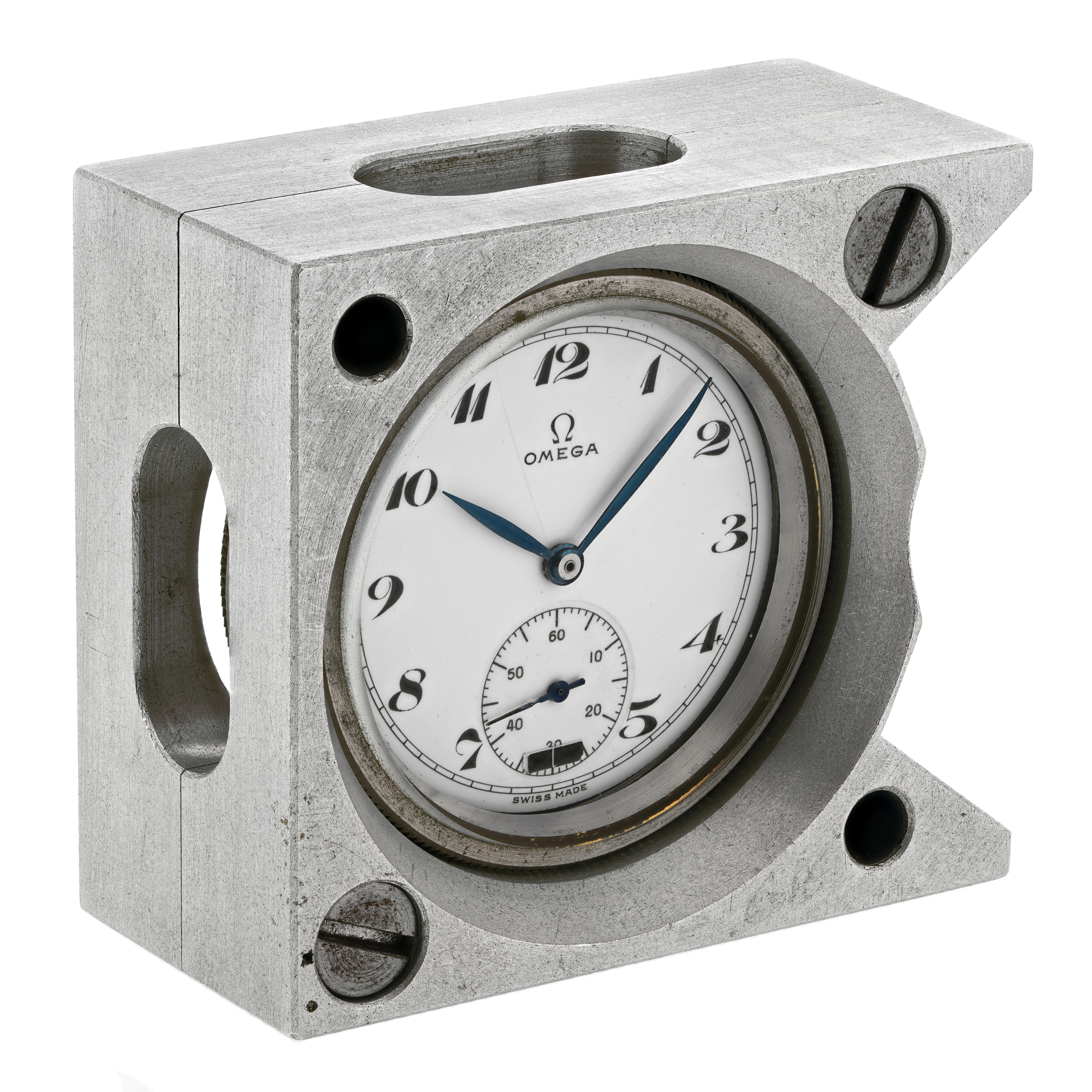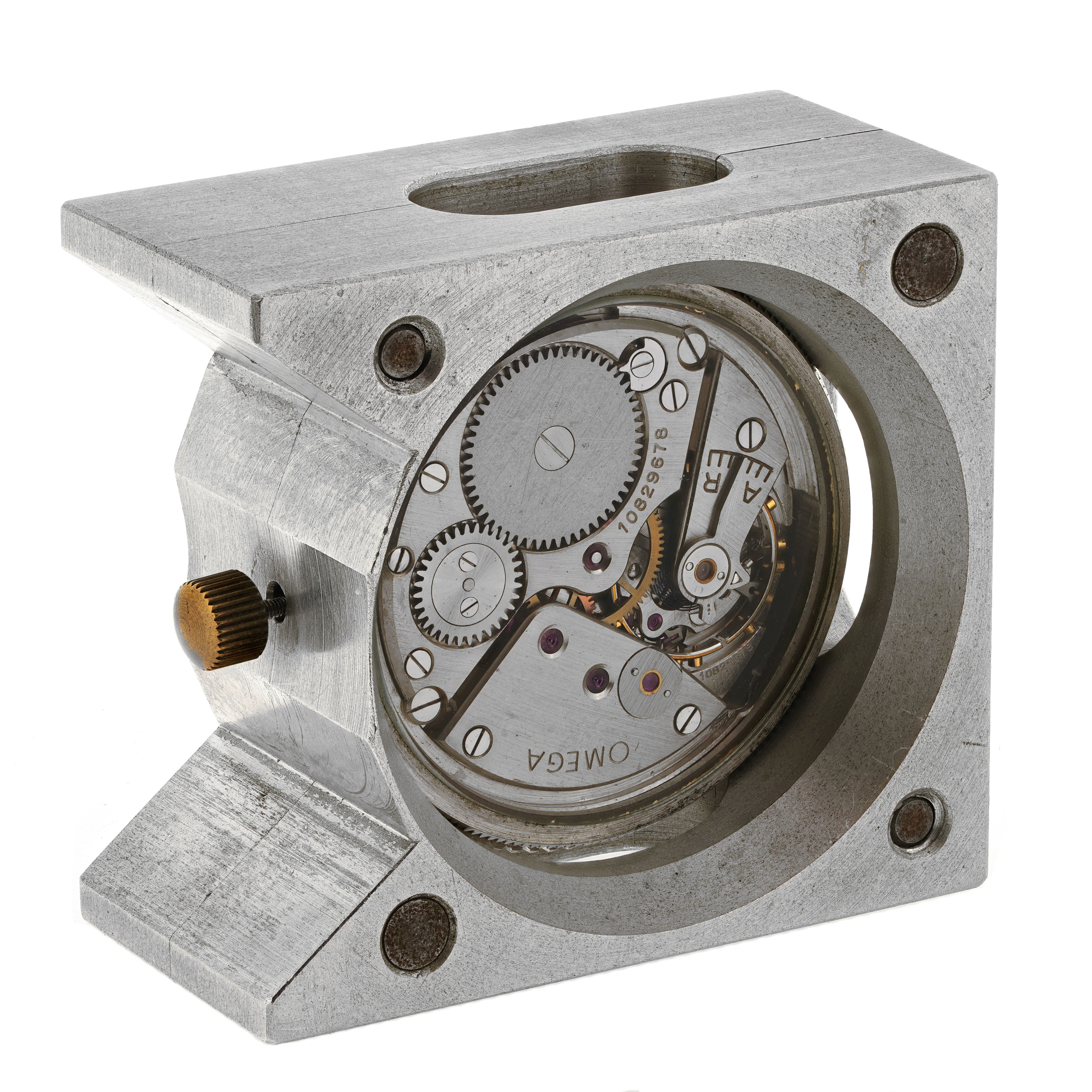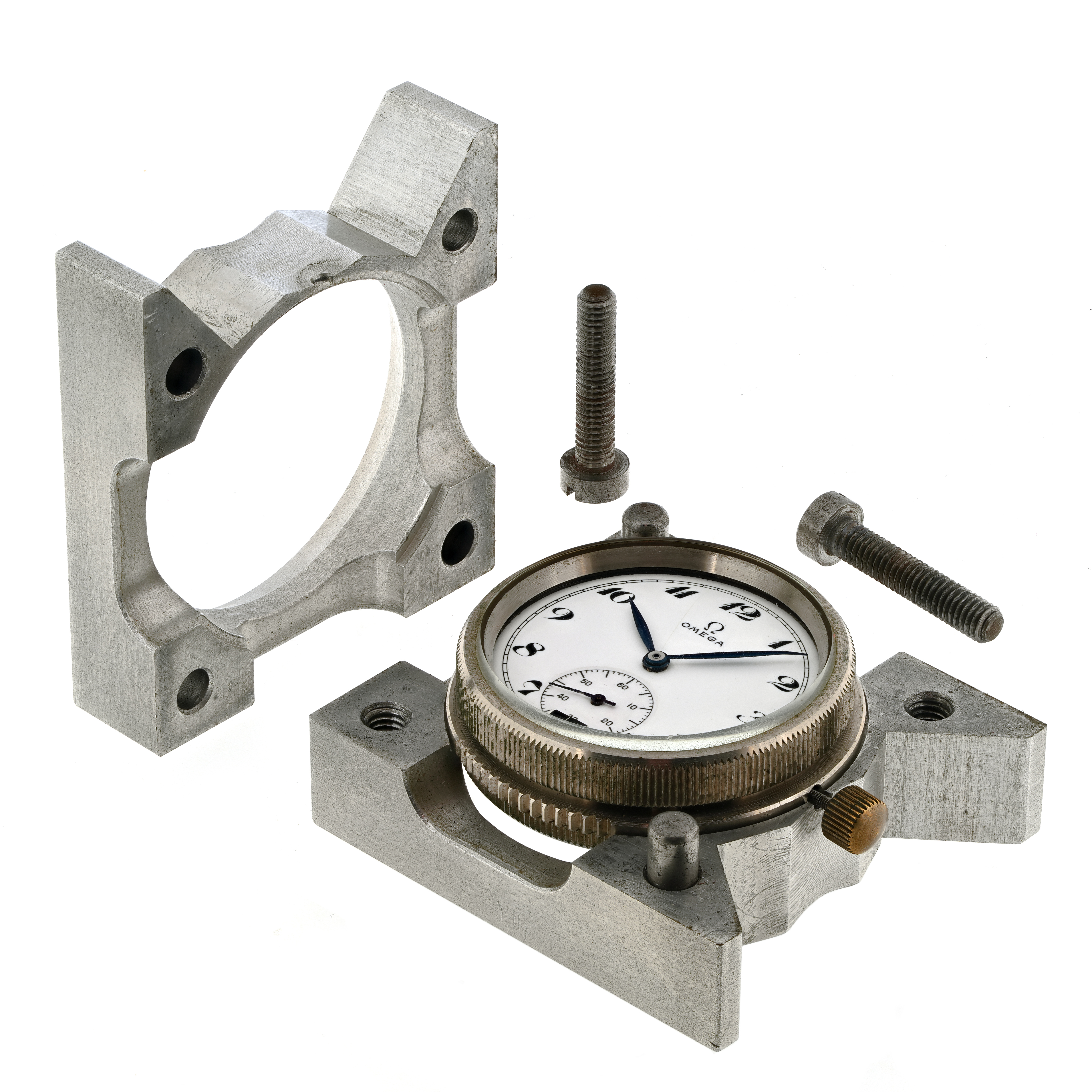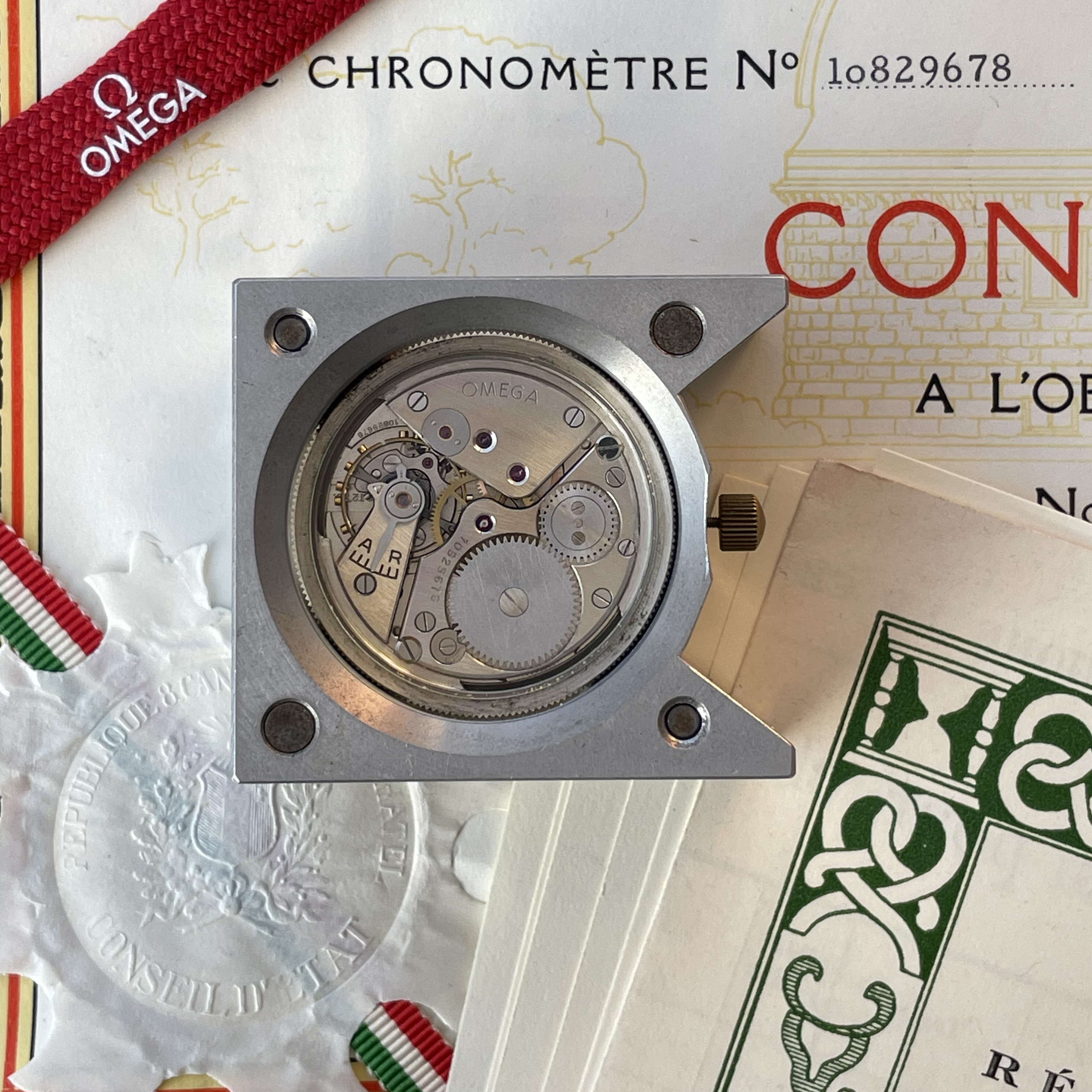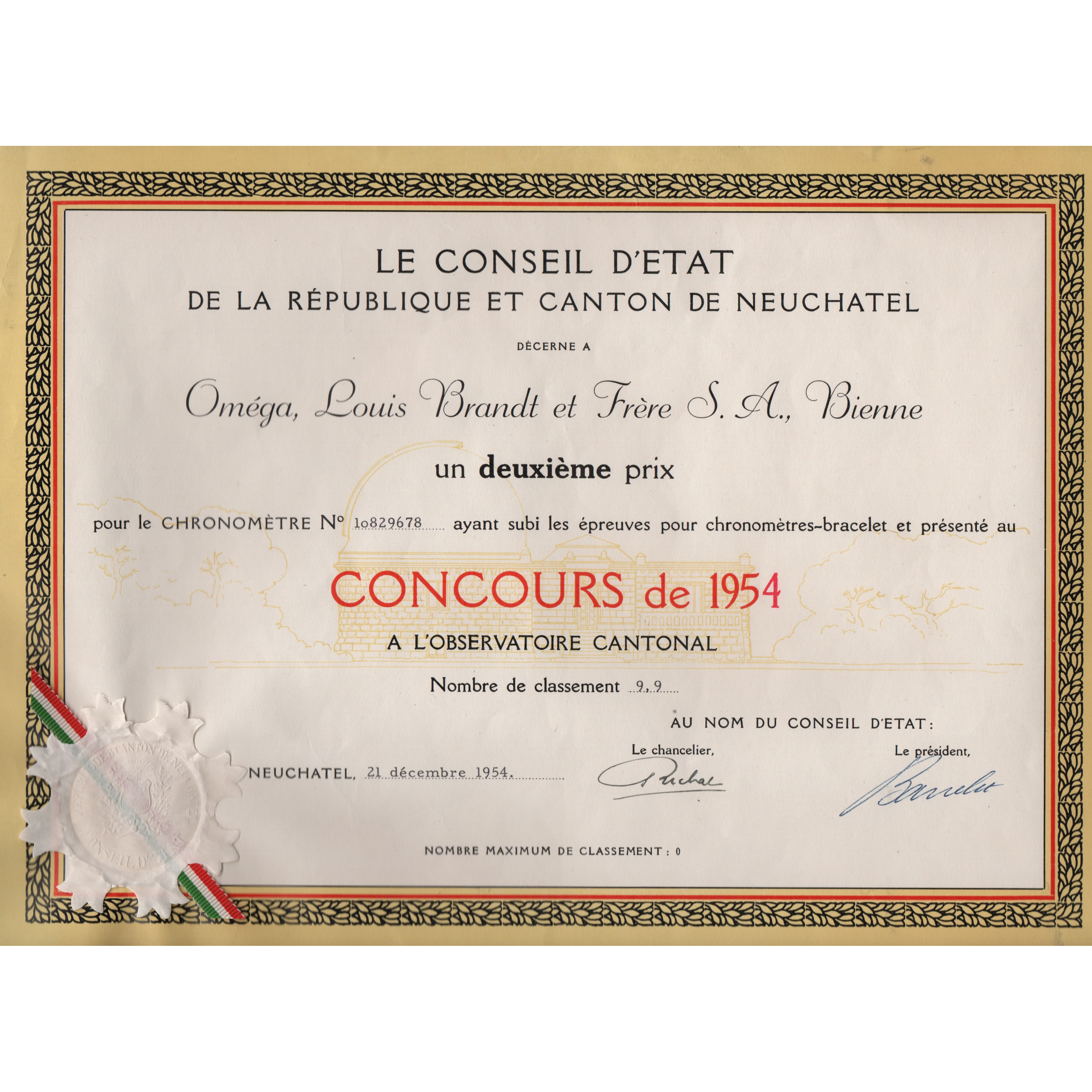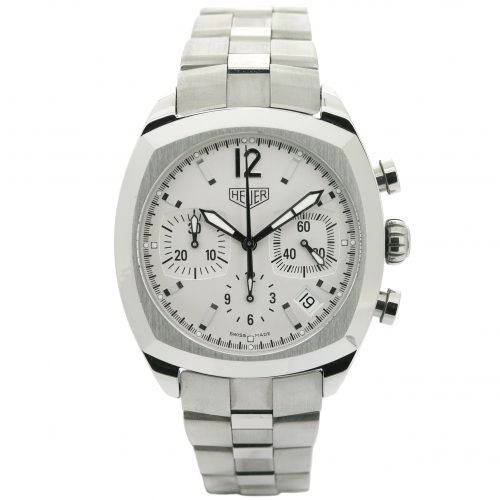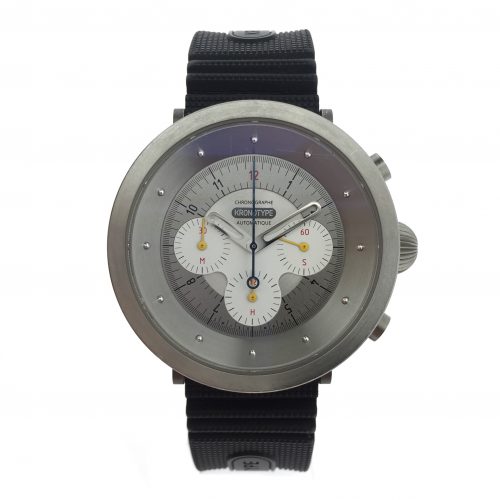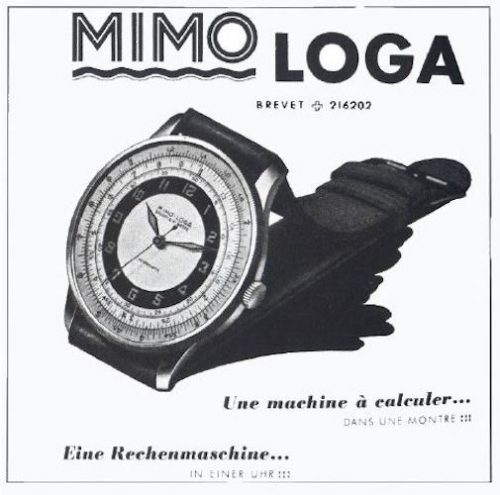Rare and well-preserved fine OMEGA Observatory Competition chronometer SN. 10829678, Cal. 30mm DP (Guillaume balance, high frequency 25200 A/h) 19 Jewels version in its original testing housing. Made early 1950s exclusively for observatory competitions, that particular piece scored 7 (1953, 1954, 1956, 1965, 1966 and 1967) years successful participation at the observatory competitions in Geneva & Neuchâtel thanks to Joseph Ory. Moreover got “2e Prix” in Neuchâtel Observatory in 1954 and 1956. Accompanied by original Neuchâtel bulletin 1956 and extremely rare original Prize certificate by “Le Conseil d’État du canton de Neuchâtel” for “Concours de 1954”, including all 7 copies of “Bulletins de Marche” issued by A. Hidding.
C. circular outer case, all set within an aluminium observatory testing box. D. White enamel dial, Breguet numerals, subsidiary seconds, steel blued hands. M. Cal. 30mm DP nickel-finished, 19 jewels lever movement, Guillaume balance with gold poising screws, oversized barrel, 25,200 A/h.
Up until 1967, the exact length of a second was determined by the Earth’s motion around the sun, and the Neuchatel observatory’s precise optics allowed the fine measurements necessary for precise timesetting to be made. Because of this, Neuchatel began to host observatory chronometer trials – a series of the most stringent, thorough accuracy tests in the history of mechanical watchmaking. The trials, held over a period of forty-five days, encompassed ten separate movement timekeeping tests in five different positions and two temperatures. These observatory trials quickly outgrew their roots as a simple certification test, and before long the trials at Neuchatel were a competitive battleground for the finest watchmakers in Europe. Names like Longines, Zenith, Peseux, Omega and many more traded records for decades, fighting to produce the most accurate movement possible. These movements were never intended for regular use, and bore little to no resemblance to what these companies offered their consumers. Along with the technical prowess of the watchmakers building the movements, in the “racing team” there were specialists, the “regleurs de precision”, who worked tweaking a number of movements until they could find a few of them to bring to the Observatory Competitions. By means of fine adjustments, replacement of key parts, use of special lubricants, they could create a few movements for the Competitions. And often they were the same movements for many years.
Watch is in overall very good condition (7/10), running and ready to use!



